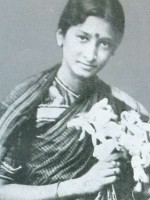Dhundiraj Govind Phalke is a Actor, Director, Scriptwriter, Producer and Cinematography Indian born on 30 april 1870 at Nashik (Inde)
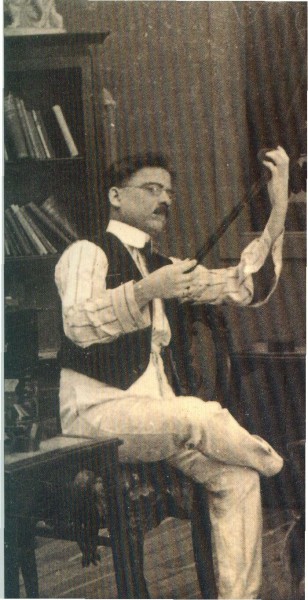
Dhundiraj Govind Phalke (Marathi: धुंडीराज गोविंद फाळके), popularly known as Dadasaheb Phalke (Marathi: दादासाहेब फाळके) (About this sound pronunciation ) (30 April 1870 – 16 February 1944) was an Indian producer-director-screenwriter, known as the father of Indian cinema. Starting with his debut film, Raja Harishchandra in 1913, now known as India's first full-length feature, he made 95 movies and 26 short films in his career spanning 19 years, till 1937, including his most noted works: Mohini Bhasmasur (1913), Satyavan Savitri (1914), Lanka Dahan (1917), Shri Krishna Janma (1918) and Kaliya Mardan (1919).
The Dadasaheb Phalke Award, for lifetime contribution to cinema, was instituted in his honor by the Government of India in 1969. The award is one of the most prestigious awards in Indian cinema and stands as the highest official recognition for film personalities in the country.
Dhundiraj Govind Phalke was born on 30 April 1870 in Marathi family at Tryambakeshwar, 30 km. from Nashik, Maharashtra, India, where his father was an accomplished scholar.
He joined Sir J. J. School of Art, Mumbai in 1885. After passing from J.J. School in 1890, Phalke went to the Kala Bhavan in Baroda, where he studied sculpture, engineering, drawing, painting and photography.
Early career
He began his career as a small town photographer in Godhra but had to rat business after the death of his first wife and child in an outbreak of the bubonic plague. He soon met the German magician Carl Hertz, one of the 40 magicians employed by the Lumiere Brothers. Soon after, he had the opportunity to work with the Archeological Survey of India as a draftsman. However, restless with his job and its constraints, he turned to the business of printing. He specialized in lithography and oleograph, and worked for painter Raja Ravi Varma. Phalke later started his own printing press, made his first trip abroad to Germany, to learn about the latest technology and machinery.
Film
Following a dispute with his partners about the running of the press, he gave up printing and turned his attention to moving pictures, after watching a silent film, The Life of Christ and envisioning Indian gods on the screen. Phalke made his first film Raja-Harishchandra effectively marking the beginning of the Indian film industry. Around one year before, Ramchandra Gopal (known as Dadasaheb Torne) had recorded on film a stage drama called Shree Pundalik, in 1912; it was first shown publicly on 3 May 1913 at Mumbai's Coronation Cinema, and shown recording at the same theater. However, the credit for making the first indigenous Indian feature film is attributed to Dadasaheb Phalke as it is said that "Pundalik" had British cinematographers.
Once again, Phalke proved successful in his new art and proceeded to make several silent films, shorts, documentary feature, educational, comic, tapping all the potential of this new medium. Film, having proved its financial viability, soon attracted businessmen who favored money over aesthetics.
Hindustan Films
Phalke formed a film company, Hindustan Films in partnership with five businessmen from Mumbai, in the hope that by having the financial aspect of his profession handled by experts in the field, he would be free to pursue the creative aspect. He set up a model studio and trained technicians, actors but, very soon, he ran into insurmountable problems with his partners. In 1920, Phalke resigned from Hindustan Films, made his first announcement of retirement from cinema, and he wrote Rangbhoomi, an acclaimed play. Lacking his extremely imaginative genius, Hindustan Films ran into deep financial loss, and he was finally persuaded to return. However, Phalke felt constrained by the business and, after directing a few films for the company, he withdrew.
Sound film
The times changed and Phalke fell victim to the emerging technology of sound film. Unable to cope with the talkies, the man who had fathered the Indian film industry became obsolete. His last silent movie Setubandhan was released in 1932 and later released with dubbing. During 1936-38, he produced his last film Gangavataran (1937), before retiring to Nashik, where he died on 16 February 1944, in penury.
Source : Wikidata
Dhundiraj Govind Phalke

Birth name दादासाहेब फाळके
Nationality Inde
Birth 30 april 1870 at Nashik (Inde)
Death 16 february 1944 (at 73 years) at Nashik (Inde)
Nationality Inde
Birth 30 april 1870 at Nashik (Inde)
Death 16 february 1944 (at 73 years) at Nashik (Inde)
The Dadasaheb Phalke Award, for lifetime contribution to cinema, was instituted in his honor by the Government of India in 1969. The award is one of the most prestigious awards in Indian cinema and stands as the highest official recognition for film personalities in the country.
Biography
Early life and educationDhundiraj Govind Phalke was born on 30 April 1870 in Marathi family at Tryambakeshwar, 30 km. from Nashik, Maharashtra, India, where his father was an accomplished scholar.
He joined Sir J. J. School of Art, Mumbai in 1885. After passing from J.J. School in 1890, Phalke went to the Kala Bhavan in Baroda, where he studied sculpture, engineering, drawing, painting and photography.
Early career
He began his career as a small town photographer in Godhra but had to rat business after the death of his first wife and child in an outbreak of the bubonic plague. He soon met the German magician Carl Hertz, one of the 40 magicians employed by the Lumiere Brothers. Soon after, he had the opportunity to work with the Archeological Survey of India as a draftsman. However, restless with his job and its constraints, he turned to the business of printing. He specialized in lithography and oleograph, and worked for painter Raja Ravi Varma. Phalke later started his own printing press, made his first trip abroad to Germany, to learn about the latest technology and machinery.
Film
Following a dispute with his partners about the running of the press, he gave up printing and turned his attention to moving pictures, after watching a silent film, The Life of Christ and envisioning Indian gods on the screen. Phalke made his first film Raja-Harishchandra effectively marking the beginning of the Indian film industry. Around one year before, Ramchandra Gopal (known as Dadasaheb Torne) had recorded on film a stage drama called Shree Pundalik, in 1912; it was first shown publicly on 3 May 1913 at Mumbai's Coronation Cinema, and shown recording at the same theater. However, the credit for making the first indigenous Indian feature film is attributed to Dadasaheb Phalke as it is said that "Pundalik" had British cinematographers.
Once again, Phalke proved successful in his new art and proceeded to make several silent films, shorts, documentary feature, educational, comic, tapping all the potential of this new medium. Film, having proved its financial viability, soon attracted businessmen who favored money over aesthetics.
Hindustan Films
Phalke formed a film company, Hindustan Films in partnership with five businessmen from Mumbai, in the hope that by having the financial aspect of his profession handled by experts in the field, he would be free to pursue the creative aspect. He set up a model studio and trained technicians, actors but, very soon, he ran into insurmountable problems with his partners. In 1920, Phalke resigned from Hindustan Films, made his first announcement of retirement from cinema, and he wrote Rangbhoomi, an acclaimed play. Lacking his extremely imaginative genius, Hindustan Films ran into deep financial loss, and he was finally persuaded to return. However, Phalke felt constrained by the business and, after directing a few films for the company, he withdrew.
Sound film
The times changed and Phalke fell victim to the emerging technology of sound film. Unable to cope with the talkies, the man who had fathered the Indian film industry became obsolete. His last silent movie Setubandhan was released in 1932 and later released with dubbing. During 1936-38, he produced his last film Gangavataran (1937), before retiring to Nashik, where he died on 16 February 1944, in penury.
Usually with
Filmography of Dhundiraj Govind Phalke (7 films)
Actor

Satyavadi Raja Harishchandra (1917)
, 16minutesDirected by Dhundiraj Govind Phalke
Genres Drama
Themes Films based on mythology, Films about religion
Actors D. D. Dabke or Dattatraya Damodar Dabke, Anna Salunke, Dhundiraj Govind Phalke
Rating52%





The film depicts the story of a Hindu King Harishchandra, the 36th king of the Solar Dynasty. The Hindu sage Vishwamitra reminds Harishchandra of his promise of donating his kingdom, given to the sage in his dream. Known for abiding his promises, Harishchandra donates as desired by sage. Vishwamitra demands that in order to complete the act of donation, an additional amount as "Dakshina" (honorarium) should be paid. Being empty handed now, Harishchandra sells his wife Taramati, son Rohitashwa and himself to get the required amount. The king leaves for Varanasi as after donating his kingdom, it becomes the only place outside the influence of the sage.
Director

Gangavataran (1937)
Directed by Dhundiraj Govind Phalke
Themes Films based on mythology, Films about religion
Actors Leela Mishra
Rating64%





Gangavataran is based on the tales of the Puranas, a genre of important Hindu, Jain and Buddhist religious texts. The film used special effects to show mythological miracles and fantasy scenes, credited to Babaraya Phalke, son of Dadasaheb. Gangavataran depicted the Hindu deity Shiva, and the divine sage from the Vaisnava tradition, Narada, played by Chitnis and Suresh Pardesi respectively.
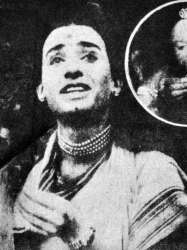
The Burning of Lanka (1917)
Directed by Dhundiraj Govind Phalke
Genres Drama, Fantasy
Themes Films based on mythology, Films about religion
Actors Anna Salunke
Rating64%





Rama, the prince of Ayodhya, is exiled to the forests for a term of fourteen years. He is joined by his wife Sita and brother Laxman. Ravana, the demon king, who also wanted to wed Sita, decides to take revenge and abducts her from the forest. While on the search for his wife, Rama meets Hanuman. Hanuman is a great devotee of Rama and promises to find Sita.

Satyavadi Raja Harishchandra (1917)
, 16minutesDirected by Dhundiraj Govind Phalke
Genres Drama
Themes Films based on mythology, Films about religion
Actors D. D. Dabke or Dattatraya Damodar Dabke, Anna Salunke, Dhundiraj Govind Phalke
Rating52%





The film depicts the story of a Hindu King Harishchandra, the 36th king of the Solar Dynasty. The Hindu sage Vishwamitra reminds Harishchandra of his promise of donating his kingdom, given to the sage in his dream. Known for abiding his promises, Harishchandra donates as desired by sage. Vishwamitra demands that in order to complete the act of donation, an additional amount as "Dakshina" (honorarium) should be paid. Being empty handed now, Harishchandra sells his wife Taramati, son Rohitashwa and himself to get the required amount. The king leaves for Varanasi as after donating his kingdom, it becomes the only place outside the influence of the sage.

Satyavan Savitri (1914)
Directed by Dhundiraj Govind Phalke
Genres Drama, Fantasy
Themes Films based on mythology, Films about religion

Mohini Bhasmasur (1913)
Directed by Dhundiraj Govind Phalke
Genres Drama
Themes Films based on mythology, Films about religion
Actors Kamalabai Gokhle
The plot of the film revolves round the theme of the Hindu mythological story of Mohini and Bhasmasur(a) ("ash-demon"), an asura (demon). The god Shiva grants Bhasmasura the power to turn anyone into ashes by touching their head. The demon decides to try the power on Shiva himself. Shiva runs terrified. The god Vishnu, witnessing the unfortunate turn of events, transforms into the seductress Mohini and enchants Bhasmasura. Bhasmasura asks her to marry him. Mohini agrees, but only on the condition that Bhasmasura follows her move for move in a dance. In the course of the dance, she places her hand on her head. Bhasmasura mimics the action, and in turn, reduces himself to ashes.
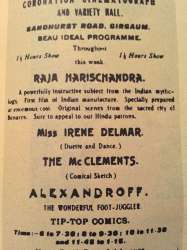
Raja Harishchandra (1913)
, 40minutesDirected by Dhundiraj Govind Phalke
Origin Inde
Genres Drama, Historical
Themes Films based on mythology, Films about religion, Films about sexuality, LGBT-related films, Transgender in film, Mythologie hindoue, LGBT-related films, LGBT-related film, Cross-dressing in film
Actors D. D. Dabke or Dattatraya Damodar Dabke, Anna Salunke
Rating58%





The film opens with a scene of a tableaux patterned on the painting by Raja Ravi Varma, of Raja Harishchandra and his wife with their son. The film revolves around the noble and righteous king, Harishchandra, who first sacrifices his kingdom, followed by his wife and eventually his children to honour his promise to the sage Vishwamitra. Though, in the end, pleased by his high morals, the Gods restore his former glory, and further bestow him with divine blessings.
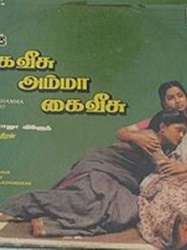
Raja Harishchandra (1913)
Directed by Dhundiraj Govind Phalke
Genres Drama, Historical
Actors Raadhika Sarathkumar, Nirosha Ramki, Anna Salunke
Rating56%





Scriptwriter

Gangavataran (1937)
Directed by Dhundiraj Govind Phalke
Themes Films based on mythology, Films about religion
Actors Leela Mishra
Rating64%





Gangavataran is based on the tales of the Puranas, a genre of important Hindu, Jain and Buddhist religious texts. The film used special effects to show mythological miracles and fantasy scenes, credited to Babaraya Phalke, son of Dadasaheb. Gangavataran depicted the Hindu deity Shiva, and the divine sage from the Vaisnava tradition, Narada, played by Chitnis and Suresh Pardesi respectively.

The Burning of Lanka (1917)
Directed by Dhundiraj Govind Phalke
Genres Drama, Fantasy
Themes Films based on mythology, Films about religion
Actors Anna Salunke
Roles Writer
Rating64%





Rama, the prince of Ayodhya, is exiled to the forests for a term of fourteen years. He is joined by his wife Sita and brother Laxman. Ravana, the demon king, who also wanted to wed Sita, decides to take revenge and abducts her from the forest. While on the search for his wife, Rama meets Hanuman. Hanuman is a great devotee of Rama and promises to find Sita.

Satyavadi Raja Harishchandra (1917)
, 16minutesDirected by Dhundiraj Govind Phalke
Genres Drama
Themes Films based on mythology, Films about religion
Actors D. D. Dabke or Dattatraya Damodar Dabke, Anna Salunke, Dhundiraj Govind Phalke
Roles Writer
Rating52%





The film depicts the story of a Hindu King Harishchandra, the 36th king of the Solar Dynasty. The Hindu sage Vishwamitra reminds Harishchandra of his promise of donating his kingdom, given to the sage in his dream. Known for abiding his promises, Harishchandra donates as desired by sage. Vishwamitra demands that in order to complete the act of donation, an additional amount as "Dakshina" (honorarium) should be paid. Being empty handed now, Harishchandra sells his wife Taramati, son Rohitashwa and himself to get the required amount. The king leaves for Varanasi as after donating his kingdom, it becomes the only place outside the influence of the sage.

Satyavan Savitri (1914)
Directed by Dhundiraj Govind Phalke
Genres Drama, Fantasy
Themes Films based on mythology, Films about religion
Roles Writer

Mohini Bhasmasur (1913)
Directed by Dhundiraj Govind Phalke
Genres Drama
Themes Films based on mythology, Films about religion
Actors Kamalabai Gokhle
Roles Writer
The plot of the film revolves round the theme of the Hindu mythological story of Mohini and Bhasmasur(a) ("ash-demon"), an asura (demon). The god Shiva grants Bhasmasura the power to turn anyone into ashes by touching their head. The demon decides to try the power on Shiva himself. Shiva runs terrified. The god Vishnu, witnessing the unfortunate turn of events, transforms into the seductress Mohini and enchants Bhasmasura. Bhasmasura asks her to marry him. Mohini agrees, but only on the condition that Bhasmasura follows her move for move in a dance. In the course of the dance, she places her hand on her head. Bhasmasura mimics the action, and in turn, reduces himself to ashes.

Raja Harishchandra (1913)
Directed by Dhundiraj Govind Phalke
Genres Drama, Historical
Actors Raadhika Sarathkumar, Nirosha Ramki, Anna Salunke
Roles Writer
Rating56%






Raja Harishchandra (1913)
, 40minutesDirected by Dhundiraj Govind Phalke
Origin Inde
Genres Drama, Historical
Themes Films based on mythology, Films about religion, Films about sexuality, LGBT-related films, Transgender in film, Mythologie hindoue, LGBT-related films, LGBT-related film, Cross-dressing in film
Actors D. D. Dabke or Dattatraya Damodar Dabke, Anna Salunke
Roles Writer
Rating58%





The film opens with a scene of a tableaux patterned on the painting by Raja Ravi Varma, of Raja Harishchandra and his wife with their son. The film revolves around the noble and righteous king, Harishchandra, who first sacrifices his kingdom, followed by his wife and eventually his children to honour his promise to the sage Vishwamitra. Though, in the end, pleased by his high morals, the Gods restore his former glory, and further bestow him with divine blessings.
 Connection
Connection



